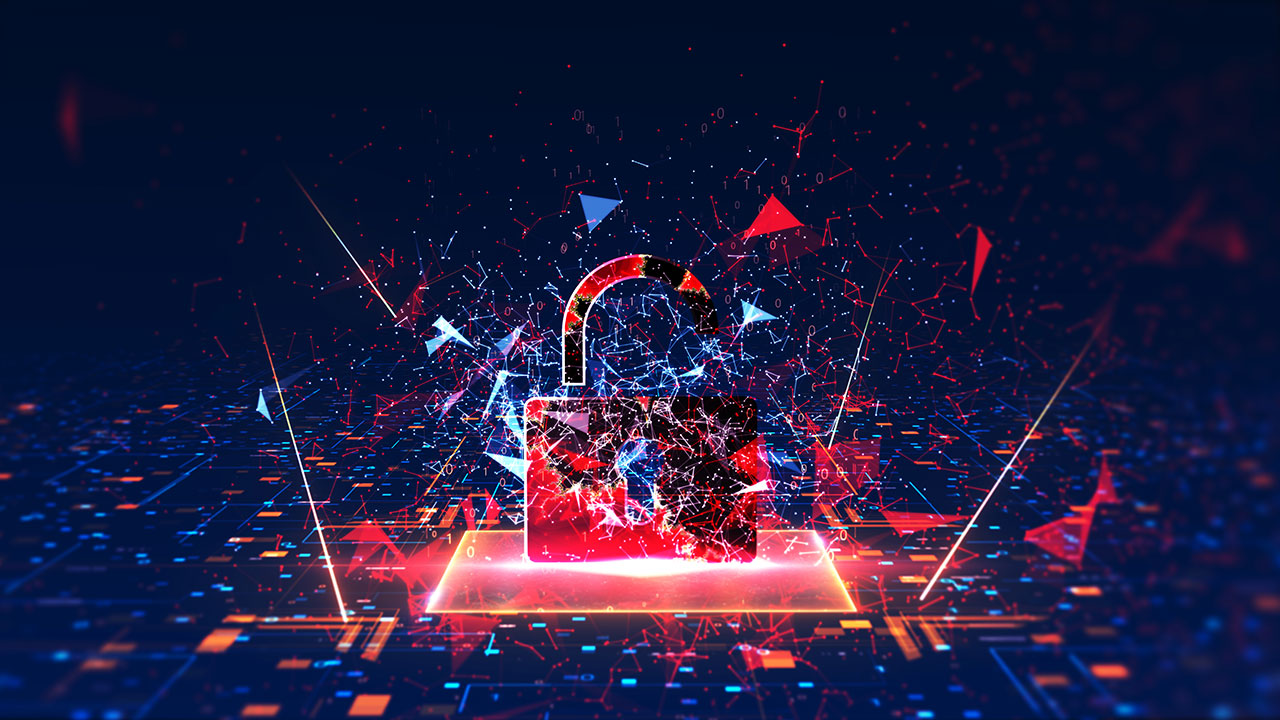Like most businesses, your organization has probably evaluated the impact of data loss on your enterprise, whether or not you have an actionable data loss prevention plan in place. Organizations rely heavily on data in all its forms, since it drives all aspects of their business from marketing to sales.
When you consider that we produce some 402.74 million terabytes of data every single day, it can take your breath away, especially since estimates say that 90% of the total data ever generated happened in the last two years.
Data is of prime importance to every type of business, and data loss can be devastating. While you may have cybersecurity measures to protect against cyberattacks such as phishing attacks, do you have protection in place against loss of data? In this blog post, we look at steps you can take to ensure the risk of data loss is reduced or eliminated.
What Is Data Loss Prevention?

Data loss refers to the destruction of information or intellectual property owned and stored by your business. That loss could be intentional and malicious or unintentional due to factors such as human error or technological failure. You could face insider threats, external attacks, or even a hardware failure that affects your customer data or intellectual property.
As the name suggests, data loss prevention is designed to stop that loss from happening through the use of several tools and/or processes. It looks at every step of your data collection and management processes, from your data pipeline to the analytical tools you use. Its purpose is to protect your data at any point in its lifecycle, from transfer to storage to use.
One important thing to note is that many organizations have to comply with data laws and/or regulations such as HIPAA (Health Insurance Portability and Accountability Act), GDPR (the EU’s General Data Protection Regulation Act), and COPPA (Children’s Online Privacy Protection Act). A stringent data loss prevention policy can help you with privacy law compliance.
There are many best practices you can follow when it comes to data governance and protection. Data loss prevention is very much based on four pillars:
- Assessment. The first step is to fully assess your data and its role in your business operations. That includes identifying and prioritizing important data, how you collect it, store it, and use it.
- Protection. That data is your company’s lifeblood, and it's important to identify the strategies to protect it and how to use processes such as encryption and user permissions as part of your comprehensive security policy.
- Prevention. This is not just about cybersecurity measures but about having clear policies within your business to prevent accidental data loss.
- Governance. Governance involves managing your data at every stage of its lifecycle from collection to storage to use in business practices and customer interactions. You also need to know when to delete data (in a safe manner) and how to comply with any relevant laws and regulations.
Data Loss Prevention Challenges for Businesses

As with anything, you Theto consider what factors may be challenging when it comes to implementing security policies or processes. Data loss prevention (DLP) is no different and will challenge any business with varying degrees of difficulty.
Balancing Security with User Experience
Human error can account for anywhere from 20% to 95% of data loss so should be one of the main focuses of any business’s data loss prevention policy. You may find that some of your workforce will be resistant to DLP tactics as they see them as intrusive or even restricting their workflow. Good organizational communications can help support the importance of DLP and ensure employees are kept up to date with new tools and processes.
Budget Constraints and Gauging Implementation ROI
Businesses don’t have unlimited budgets, and a robust data loss prevention strategy can be costly. However, it is mostly a necessary cost, especially if you could face severe financial penalties for any misuse or mishandling of your data. You need to look at how to find a balance between any costs and any restraints and look at how implementing DLP will deliver an ROI (return on investment), even if that ROI is long-term.
Keeping up with Emerging Threats and New Solutions

The cybersecurity landscape is ever changing and just as cybersecurity experts and companies are developing solutions for known threats, cybercriminals are coming up with new threats. This can present a real challenge, both in terms of facing those new threats and in dealing with the costs associated with implementing new solutions.
Ensuring Smooth Integration with Existing Security Systems
You may have already implemented security systems across your organization from your website to your customer data platform (CDP). When you see a need for new tools and systems, you want to be sure that they can integrate smoothly with what you already use. If you’re considering a new security solution, look at what integration features it offers as well as the company support offered. At Digi, for example, Professional Services are available to help with security integration and help establishing the most robust security processes for your use case to ensure your Digi cellular solutions and IT servers are ready for a successful deployment, as well as ongoing remote management of your deployed devices.
Gathering Employee Support for DLP Initiatives
Embracing data loss prevention has to be part of your company culture. If DLP tools and processes are radically different from what you use and how you do things now, then it's important to establish an effective program of education and training to ensure your workforce supports all DLP endeavors.
Tips to Ensure Data Loss Prevention in Your Business

It’s not always about new DLP tools; sometimes it’s just about following some tips that can help your organization be better equipped to integrate data loss prevention into all levels of your business.
1. Train Employees on Data Handling and Security Practices
As mentioned, human error is one of the most common causes of data loss, so your DLP efforts should start with your employees. A critical step is to develop and implement an educational program that educates employees on the importance of data protection best practices. This should include how to handle sensitive data, password protection, data encryption, and recognizing cybersecurity threats such as phishing and how to deal with and report them.
2. Implement Strong Access Controls to Restrict Data Exposure
Your data has varying degrees of importance and sensitivity — for example, public documentation vs. your company’s product designs or future product roadmaps — and how you allow access to your data should reflect that. It's critical to establish a robust user permission policy that ensures only the relevant employees can access your most sensitive data. You also need data encryption policies that add an extra layer of protection.
3. Regularly Assess and Update DLP Policies and Procedures
Threats are always evolving, so it’s essential that you conduct regular security audits to gauge effectiveness and identify any vulnerabilities. When it comes to software and other tech, the provider should notify you when there are updates and patches in case of software corruption or other issues, and you should be looking to roll these out as quickly as possible.
4. Develop a Plan for Responding Effectively to Data Breaches

Hackers may target any of your systems, from your company email and productivity systems to your CRM (customer relationship management) database. You need to have contingency plans in place to deal with any level of data breach. Your plan should include disaster recovery, a definition of roles and responsibilities, and a business continuity plan that minimizes downtime and mitigates any negative effects.
Hold regular emergency drills, audit your plans to account for any changes, and look to implement effective loss prevention strategies.
5. Maintain Compliance with Relevant Data Privacy Laws
Compliance should be taken very seriously; failure to do so can result in large financial penalties such as the 1.2 billion Euros fine imposed on Meta for breaching GDPR rules in 2023. Compliance automation can streamline adherence to safety and security regulations like GDPR by leveraging software tools to manage and enforce policies consistently across organizations. This method automates processes such as data classification, access control, and audit tracking, reducing human error and ensuring continuous compliance. This approach enhances efficiency, minimizes risks, and simplifies reporting, enabling organizations to meet stringent regulatory standards effectively.
6. Encrypt Both Sensitive Data at Rest and in Transit
Your data can be vulnerable at any stage of the process, from collection to sharing to storage. Data encryption helps protect your customers’ privacy as well as protecting it from cyberattacks. In some cases, such as healthcare and finance, encryption may be mandatory and you may face penalties if you fail to do so.
7. Conduct Regular Data Backups and Test Recovery Procedures
A core part of your contingency plans should include data backups and recovery. Remember that daily 402.74 million terabytes figure? That shows why you should conduct regular backups, ideally to cloud storage or remote servers. You can automate this process so it happens automatically and regularly. Frequency can be dictated by how much data your own organization generates.
You should also ensure that all backed-up data is encrypted. Test the process on a regular basis to be sure that integrity is maintained and that the datasets are accessible if needed for recovery. It’s also worth considering what would happen if a power outage occurs—you should have a contingency plan that addresses that possibility.
Conclusion
You already know how important your data is and how important it is to protect it. It can face threats from multiple directions, including cyberattacks, natural disasters, and human error. Your DLP strategy has to recognize all these potential threats and you should be implementing different tactics such as monitoring your network traffic for unauthorized parties.
Malicious software may be designed to steal sensitive files or, in the case of ransomware, to extort money from you by threatening everything from your website to your cloud repositories. Email attacks and cyber-attacks threaten your data and your business operations. Having a strong data loss prevention strategy should be your frontline in the fight against cybercrime.
Digi offers a broad family of IoT and IT products, services and solutions with integrated security and device management. Explore now.
Next Steps
About the Author
 Brooks Patterson leads Product Marketing at RudderStack. With a strong foundation in content creation and product marketing, he has crafted engaging content and is the mind behind the top episodes of The Data Stack Show. He is passionate about making content that connects on a deeper level and drives action. He always champions innovation in his work, which makes his contributions vital to RudderStack’s developments in warehouse-native CDPs. You can find him on LinkedIn.
Brooks Patterson leads Product Marketing at RudderStack. With a strong foundation in content creation and product marketing, he has crafted engaging content and is the mind behind the top episodes of The Data Stack Show. He is passionate about making content that connects on a deeper level and drives action. He always champions innovation in his work, which makes his contributions vital to RudderStack’s developments in warehouse-native CDPs. You can find him on LinkedIn.